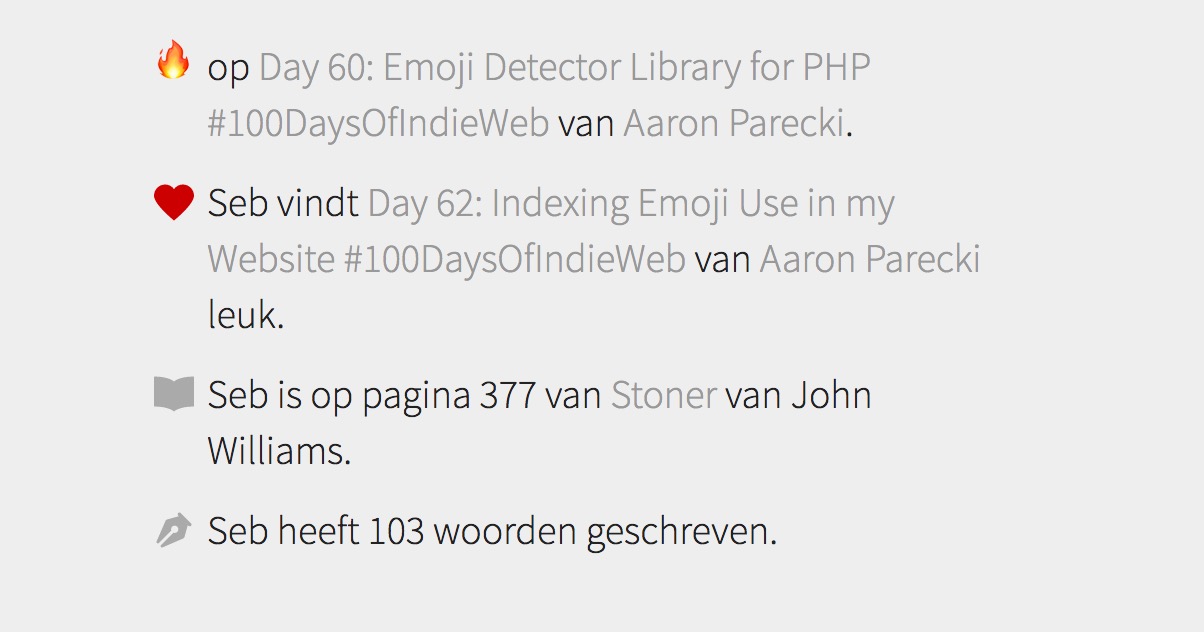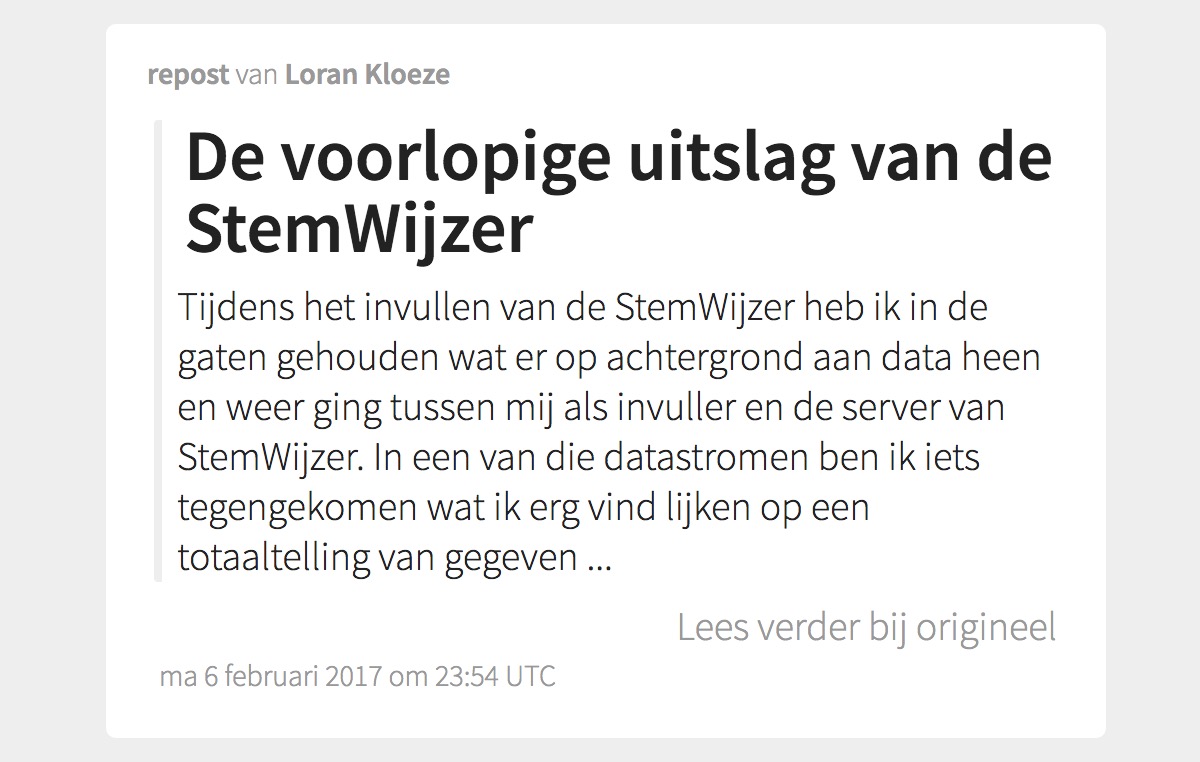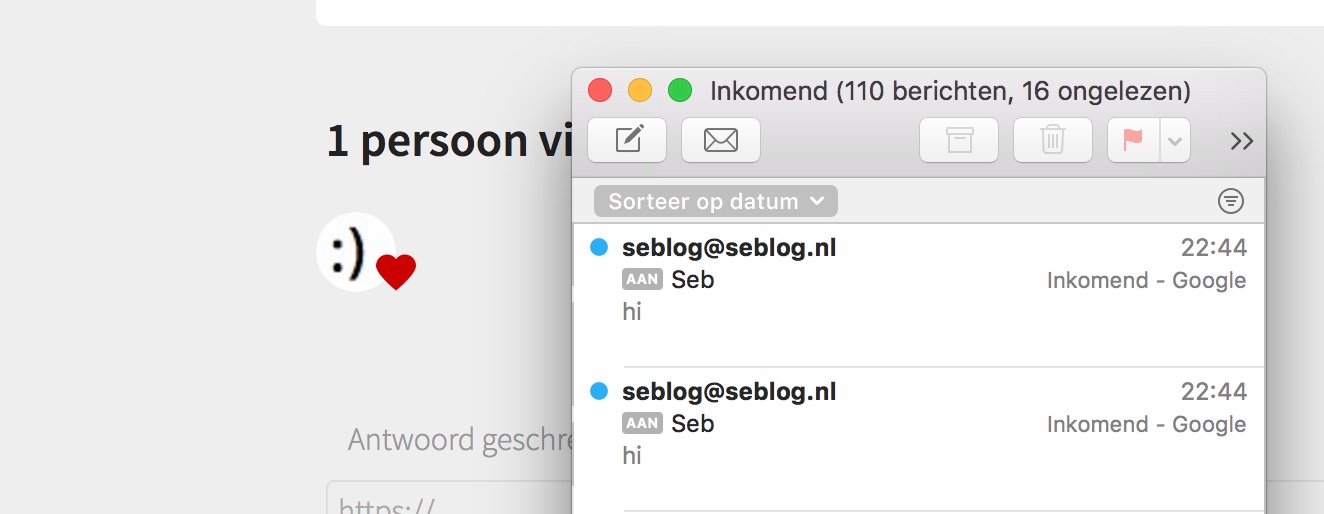Day 43: The silent return
Okay, I am going something I didn’t expect doing for a long time. I am still uncertain about it, but my curiosity and my love for round numbers won today.
Today exactly 2.5 years ago, I disabled my Facebook account. I did quit for various reasons, varying from ‘omg my privacy’ to ‘I spent too much time on here’ and ‘they have too much control over my newsfeed’ and ‘they will disappear soon anyway’. I still read articles from people struggling with those issues, except for the last one: Facebook still didn’t disappear. (What was I thinking?)
In the past 2.5 years, I had varying levels of FOMO. Most days where fine, especially later on when I got detached enough. But some days, after nights with friends, citing things that happened elsewhere & on Facebook, I felt I missed a lot. The sad thing is that there’s no way to know for sure.
So my FOMO changed from ‘I am missing stuff’ to ‘Am I missing stuff?’ I am not sure, but I probably am. How bad is that?
Quitting Facebook is about taking responsibility for your social life again. You need to track birthdays yourself, you need to actively reach out to people to meet them, you need to discover events for yourself.
I’m not saying I’ve accomplished to do those things myself over the past 2.5 years, but I’m also not saying that I will let Facebook fully handle them again. I’m not even sure Facebook still fills those needs these days. 2.5 years is a long time on the internet. But I am genuinely curious what Facebook does nowadays. (I’ve heard a lot about fake news and filterbubbles. Sounds cool.)
There is another part to returning that I’m not sure about. To get all the ‘benefits’ of being socially connected via Facebook, you have to spend a lot of time on the platform. I actually don’t really want to put in that much work. I know, I will be addicted to the likes and pokes within days, and I won’t notice all the time that goes in. But that was not how I intend to use Facebook over the comming month.
Ideally, I want Facebook to be a box. Or a hole, a well maybe. I want to throw in stuff, and I want to get stuff out, but I don’t want to be in the box/hole/well myself all day. I want to check once a day what happened, via an interface that doesn’t want to drag me in. (I can make one myself, I think.) And I want to post stuff on there like I post things to Twitter now: I just write it on my blog and then click on ‘also to Facebook’. I don’t want to login there to post something and get distracked.
And this is the last dilemma. Facebook gives an external boost to your ego. I could use that sometimes (we all do, right?) but it’s not the healthiest thing. Is it the demanding interface and the addictive notifications that are bad, or is the service itself the harmful thing? Should I want to share my thoughts with other people, or do I need to learn to be content with them myself?
Either way, I’m not back at Facebook in the sense that I’m completely hooked again like I was when I left. Being gone for 2.5 years makes that the interface is completely different. (I have seen it at other peoples computers, of course, so I’m not completely unfamiliar, but I have no personal bond with this layout.) Let’s hope I can contain this beast. And if not, I will simply leave again, because I know the world won’t end if I do.
And now for the action: I’m going to log in, see that it’s enabled again, and leave it like that. The silent return.

 Twitter
Twitter Instagram
Instagram LinkedIn
LinkedIn Github
Github Strava
Strava Facebook
Facebook






